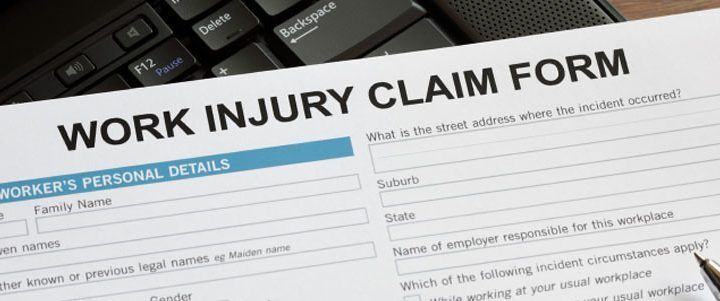Injured Workers, during the course of their workers’ compensation claims will be seen by treaters and evaluators. These treaters and evaluators frequently have Injured Workers fill out self-reporting concerning their physical conditions.
This self-reporting is done with respect to various orthopedic body parts. One of these requests for self-reporting is with respect to the cervical spine. It is provided to the Injured Worker in the form of an index. One of these indexes with respect to the neck is the Neck Disability Index (NDI.)
This article will discuss the Neck Disability Index, what it is used for within the workers’ compensation setting, and how Injured Workers should address it.
What is the Purpose of Self-Reporting?
“Self-reported disability and other outcome measures are an important part of patient assessment and provide important clinical information to the clinician. Neck pain related disability and function need to be measured in order to assess pre and post treatment patient outcomes, as well as provide valuable information to other stakeholders.” The association between neck pain, the Neck Disability Index and cervical ranges of motion: a narrative review Emily R. Howell, BPHE (Hons), DC* J Can Chiropr Assoc. 2011 Sep; 55(3): 211–221. PMCID: PMC3154067 PMID: 21886283
In sum, an evaluator or treater can tell a lot of about a patient’s condition if the patient accurately describes their condition. This can be an effective cost-saving measure to assist in treatment and evaluation.
What is the Neck Disability Index (NDI)?
The Neck Disability Index (NDI) is a 10-item questionnaire that measures a patient’s self-reported neck pain related disability. It was the first of its kind when it was published in 1991 in JMPT. The association between neck pain, the Neck Disability Index and cervical ranges of motion: a narrative review Emily R. Howell, BPHE (Hons), DC* J Can Chiropr Assoc. 2011 Sep; 55(3): 211–221. PMCID: PMC3154067 PMID: 21886283
The NDI addresses perceived neck pain and disability status. The disability status addresses various issues such as work and participation in activities of daily living.
What Neck Injuries Can This Cover?
There are a variety of neck conditions that the NDI can address. This includes cervical spine conditions such as mechanical neck pain, cervical radiculopathy, whiplash related injuries, chronic, non-specific neck pain, chronic, non traumatic and chronic uncomplicated neck pain, and degenerative posttraumatic and other neck pain.
When You Have a Workers’ Compensation Case When Would You Take Fill Out Such an Index?
There are a number of occasions for which the NDI could be used. First, it would be when an Injured Worker present with neck complaints. Second, it would generally be used by Orthopedic Doctors or Chiropractors. Third, it would be used for treatment for neck complaints. Perhaps the Primary Treating Physician and Physical Therapists may want to have the NDI taken to measure complaints and possible improvement. Therefore, the NDI can be done over a series of visits. Fourth, it could be used by a Qualified Medical Evaluator or Agreed Medical Evaluator who is addressing neck complaints. Fifth, it may be used by a Mental Health Practitioner to obtain a picture of the Injured Worker’s physical state.
What Does the NDI Address?
The NDI addresses 10 different specific categories. These categories are Pain intensity, Personal Care, Lifting, Reading, Headache, Concentration, Work, Driving, Sleeping, and Recreation.
How is It Scored?
“Each question is measured on a scale from 0 (no disability) to 5, and an overall score out of 100 is calculated by adding each item score together and multiplying it by two. A higher NDI score means the greater a patient’s perceived disability due to neck pain. The “minimally clinically important change” by patients has been found to be 5 or 10%..” The association between neck pain, the Neck Disability Index and cervical ranges of motion: a narrative review Emily R. Howell, BPHE (Hons), DC* J Can Chiropr Assoc. 2011 Sep; 55(3): 211–221. PMCID: PMC3154067 PMID: 21886283
Note: This is about “perceived” disabilities. The score reflects how the Injured Worker feels about their condition. It is not dealing with the “reality” of the injury. A high number can either reflect a severe impairment or exaggeration. There is also criticism that the NDI does not address psychosocial or emotional aspects of neck disabilities. https://www.mdapp.co/neck-disability-index-ndi-calculator-222/
What are the Descriptions of these indexes?
Pain: the Pain Occurrences and the perceived severity
Personal Care: the Ability to Care for Oneself and Degree of Perceived Accuracy in Doing So
Lifting: the Capacity to lift different weights with or without pain
Headache: the Frequency and Perceived Severity of Recurrent Headaches
Concentrate: the Degree of Difficulty Encountered When Trying to Concentrate
Work: the Comparison Between Current and Past Work Capacity
Driving: the Ability to Drive and Length of Time to Drive Before Pain Occurs
Sleeping: the Quantification of Sleep Disturbance
Recreation: the Perceived Impairment to Partaking I Leisure Activities
What Are the Questions of Pain Intensity?
1. I have no pain at the moment, 2. The pain is mild at the moment, 3. The pain comes and goes and is moderate, 4. The pain is moderate and does not vary much, 5. The pain is severe but comes and goes, 6. The pain is severe and does not vary much.
What are the Questions for Personal Care (Washing, Dressing, etc)
1. I can look after myself without causing extra pain; 2. I can look after myself normally but it causes extra pain, 3. It is painful to look after myself and I am slow and careful, 4. I need some help, but manage most of my personal care, 5. I need help every day in most aspects of self-care, and 6. I do not get dressed, I wash with difficulty and stay in bed.
What are the Questions for Lifting?
1. I can lift heavy weights without extra pain, 2. I can lift heavy weights, but it causes extra pain, 3. Pain prevents me from lifting heavy weights off the floor but I can where they are position, for example on a table; 4. Pain prevents me from lifting heavy weights, but I can manage light to medium weights if they are conveniently positioned, 5. I can lift very light weights, and 6. I cannot lift or carry anything.
What are the Questions for Reading?
1. I can read as much as I want to with no pain in my neck; 2. I can read as much as I want with slight pain in my neck; 3. I can read as much as I want with moderate pain in my neck; 4. I cannot read as much as I want because of moderate pain in my neck; 5. I cannot read as much as I want because of severe pain in my neck; and 6. I cannot read at all.
What Are the Questions for Headaches?
1. I have no headaches at all 2. I have slight headaches which come infrequently; 3. I have moderate headaches which come infrequently. 4. I have moderate headaches which come frequently; 5. I have severe headaches which come frequently; and 6. I have headaches almost all of the time.
What are the Questions for Concentration?
1. I can concentrate fully when I want to with no difficulty; 2. I can concentrate fully when I want to with slight difficulty; 3. I have a fair degree of difficulty in concentrating when I want to; 4. I have a lot of difficulty in concentrating when I want to; 5. I have a great dealt of difficulty in concentrating when I want to; and 6. I cannot concentrate at all.
What are the Questions for Work?
1. I can do as much work as I want to; 2. I can do only my usual work, but no more, 3. I can do most of my usual work, but no more; 4. I cannot do my usual work; 5. I can hardly do any work at all; and 6. I cannot do any work at all.
What are the Questions for Sleeping?
1. I have no trouble sleeping; 2. My sleep is slightly disturbed (less than 1 hour sleepless); 3. My sleep is moderately disturbed (2-3 hours sleepless); 4. My sleep is moderately disturbed (2-3 hours sleepless) ; 5. My sleep is greatly disturbed (3-5 hours sleepless); 6. My sleep is completely disturbed (5-7 hours.)
What are the Question for Recreation?
1. I am able engage in all recreational activities with no pain in my neck at all; 2. I am able to engage in all recreational activities with some pain in my neck; 3. I am able to engage in most, but not all recreational because of pain in my neck; 4. I am able to engage in a few of my unusual recreational activities because of pain; 5. I can hardly do any recreational activities because of pain my neck; 6. I cannot do any recreational activities at all.
How Do Your Score the NDI?
The scores for the questions range from 0 to five. Therefore, scores can range from 0 to 50. O would mean minimal neck pain with minimal limitation and 50 would represent severe pain and significant limitation.
After index is scored, it translates as follows: A NDI score of 0-4, would amount to an NDI percentage of 0-8 percent and be interpreted as a “none” as far as the level of disability.
A NDI score of 5-15, would amount to an NDI percentage of 10-28 percent and interpreted as “mild” as far as the level of disability. A NDI score of 15-24, would amount to an NDI percentage of 30-48 percent and interpreted as “moderate” as far as the level of disability. A NDI score of 25-34, would amount to an NDI percentage of 50-64 percent and interpreted as “severe” as far as the level of disability. A NDI score of 35-50, would amount to an NDI percentage of 70-100 percent and interpreted as “complete” as far as the level of disability. https://www.mdapp.co/neck-disability-index-ndi-calculator-222/
What Is there a Concern for Injured Workers Over The NDI?
This Index documents a variety of activities both “Activities of Daily Living” and “Work Activities.” A credibility assessment would relate to whether the answers to the index matches up with the reported activities provided by the Injured Worker to the evaluators or treaters. In sum, this Index can impact the Injured Worker’s credibility.
There are also problems with this Index for a variety of reasons. First, many terms used in the questions are “terms of art.” By “terms of art,” they actually have a definition which the Injured Worker is unaware of. For example, heavy weights may imply a 50 percent loss of the person’s lifting capacity.
When an Injured Worker does not understand the question, it can lead to an inaccurate answer. Also, there may be activities for which an Injured Worker does not engage in and therefore cannot answer in any meaningful fashion. For example, in an extreme case, a blind person may read braille and the reading questions would not be relevant.
Is the NDI Different from the Owestry Low Back Pain Disability Index?
Yes. The NDI address different issues. There is a focus on activities that are different such as headaches, reading and concentration. In Workers’ Compensation Impairment Analysis, due to the employment of the American Medical Association Guide to the Evaluation of Permanent Impairment, 5th Edition, there is a focus on an Individual’s “Activities of Daily Living.” For an article on Activities of Daily Living, click here. This index is goes slightly beyond the ADLs.
How Can These Indexes Be Important for a Workers’ Compensation Case?
The NDI can impact an Injured Worker in a few different ways. It can impact credibility. For example, in a minor neck injury case, a high score on the index may indicate malingering. On the otherhand, it could possibly indicate a misdiagnosis. Finally, there can be some concern of other medical conditions that may be the source of the symptoms and impact on physical activities.
In sum, an abnormal score can trigger a “red flag.” Further, comparison of the Injured Worker’s actual activities to the NDI answers may also raise issues of credibility.
What If I Need Legal Advice?
If you would like a free consultation concerning any workers’ compensation case, please contact the Law Offices of Edward J. Singer, a Professional Law Corporation. They have been helping people in Central and Southern California deal with their worker’s compensation cases for 28 years. Contact us today for more information.




